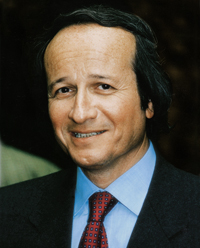Roger-Gérard_Schwartzenberg
Roger-Gérard Schwartzenberg
French politician
Roger-Gérard Schwartzenberg (born 17 April 1943 in Pau, Pyrénées-Atlantiques) is a French politician of the Radical Party of the Left (French: Parti Radical de Gauche, PRG).
This article has multiple issues. Please help improve it or discuss these issues on the talk page. (Learn how and when to remove these template messages)
|
